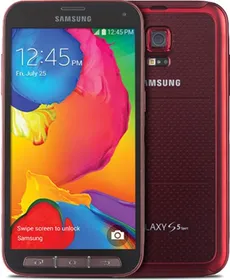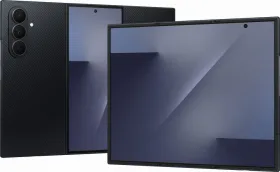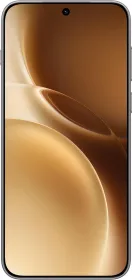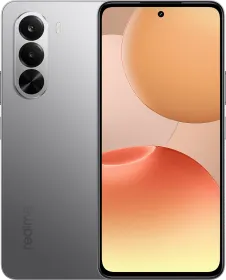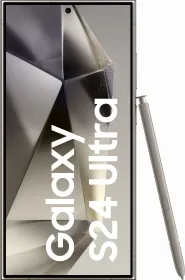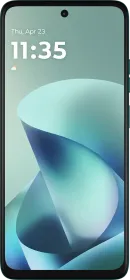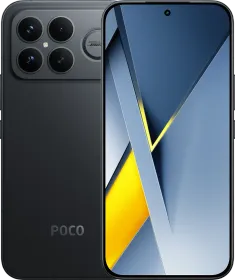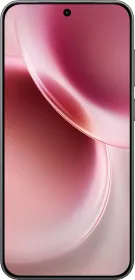For years, every Android smartwatch has come with a frustrating compromise, until now. The new Samsung Galaxy Watch 8 is the first watch that feels like it has real smarts, and its name is Gemini. Launched in India alongside the refined Galaxy Watch 8 Classic, this new model uses Google’s powerful AI to transform what a watch can do. Forget just counting steps, this is about connecting dots in your health and schedule that you didn’t even see. After weeks of testing, it’s clear the competition is now officially on notice.
Starting at ₹32,999, the Galaxy Watch 8 poses a new question: are we finally entering the era of the genuinely smart watch? Let’s find the answer in the full review.
Samsung Galaxy Watch8 Price & Availability
The Samsung Galaxy Watch 8 lineup is now available globally, including India and the United States. The smartwatch comes in two sizes 40mm and 44mm and in both Bluetooth and LTE (Cellular) variants.
In India, the Galaxy Watch 8 is currently being sold at attractive festive offer prices, making it more affordable than its original launch pricing. The 40mm Bluetooth model is priced at ₹22,990, while the 40mm LTE variant costs ₹24,990. The larger 44mm Bluetooth model also starts at ₹22,990, and the 44mm LTE (Wi-Fi + Cellular) version is available for ₹32,990. These prices include ongoing festive discounts and bank offers, and the watches can be purchased through Samsung’s official website, Amazon, Flipkart, and leading offline retail stores across the country.
In the United States, the Galaxy Watch 8 series starts at $349.99 for the 40mm Bluetooth model and $399.99 for the 40mm LTE version. The 44mm Bluetooth variant is priced at $379.99, while the top-end 44mm LTE model costs $429.99.
The Galaxy Watch 8 is available in multiple color options, including Graphite, Silver, and Pink Gold, depending on the region. Both in India and the US, the watches are available through Samsung.com, Amazon, Best Buy, Flipkart, and authorized Samsung Experience Stores.
Pros
- Sleek, lightweight, and premium cushion design
- Super AMOLED display hits 3,000 nits of brightness
- Gemini AI integration is surprisingly capable
- Excellent comfort for daily use
- Accurate fitness tracking and improved coaching tools
- Smooth performance with the new Exynos W1000 chip
Cons
- Battery life is still only about a day
- Slow charging for a 2025 smartwatch
- Key health features locked to Samsung phones
- No physical bezel on the standard model
Samsung Galaxy Watch8 Review: Design & Build
Samsung made its thinnest, lightest, and most comfortable watch ever. But to get there, it had to leave some fan-favorite features behind. Samsung isn’t trying to hide it: the Galaxy Watch 8 is borrowing its best ideas from Samsung’s more premium Galaxy Watch Ultra. At first glance, you’ll notice the cushion case design is a soft, squared-off circle, or squircle, that feels both sporty and sophisticated. It’s a clean break from the purely circular designs of the past, creating a look that’s unmistakably modern and distinctly Samsung.

The real difference you will feel when you pick it up. Crafted from Armor Aluminum 2 and capped with Sapphire Crystal glass, the Watch 8 feels premium but is shockingly lightweight. At just 8.6mm thick, this is the thinnest Galaxy Watch Samsung has ever made, trimming over 11% off last year’s model.
The 40mm model weighs just 30 grams, and the 44mm is even lighter at 34 grams, making it one of the most comfortable Wear OS watches to wear all day and, more importantly, all night. It’s durable, too. With MIL-STD-810H, IP68, and 5ATM ratings, it’s built to handle everything from a sweaty gym session to a swim in the pool.
Thanks to the redesigned chassis, the watch sits flatter and closer to your wrist. This isn’t just for comfort; it also improves the accuracy of the health sensors. It’s the kind of smartwatch you genuinely forget you’re wearing until it buzzes with a notification.
But this new, streamlined design comes with a couple of compromises. First, the beloved physical rotating bezel from the “Classic” models is gone, as is the programmable Quick Button found on the Ultra. You’re left with two standard Home and Back buttons. They work perfectly fine, but they lack the satisfying, tactile control that made the rotating bezel a fan favorite.


The bigger issue for longtime Galaxy Watch users might be the new Dynamic Lug system for swapping straps. On one hand, it’s slick, quick, and easy. On the other hand, it’s not backward-compatible with any previous Galaxy Watch bands. The bad news? Your entire collection of old straps is now obsolete. Samsung says the new lug system was necessary to ensure the BioActive Sensor on the back of the watch maintains flush, consistent contact with your skin. It’s a trade-off: you lose band compatibility in exchange for what should be more reliable and accurate health tracking.
Overall, the Galaxy Watch 8 design absolutely nails the fundamentals. It’s lighter, stronger, and more comfortable than any of its predecessors. While the loss of the rotating bezel and backward band compatibility will sting for some, the new design is a clear step forward. It’s a refined, focused, and purposeful smartwatch that stands as one of the best-looking and most wearable Android smartwatches of 2025.
Samsung Galaxy Watch8 Review: Display and Haptics
If there’s one area where Samsung continues to dominate, it’s display technology, and the Galaxy Watch 8 proudly carries that legacy forward. The smartwatch features a Super AMOLED panel that’s not just beautiful but also bright. With a peak brightness of 3,000 nits, this is one of the brightest smartwatch screens you can buy in 2025. Even under direct sunlight, the display stays sharp, colorful, and easy to read, whether you’re checking your heart rate mid-run or glancing at notifications on your morning commute.

Both the 40mm (1.34-inch, 438×438) and 44mm (1.47-inch, 480×480) variants deliver rich colors and deep contrast that make every watch face pop. Samsung covers the display with Sapphire Crystal glass, offering not just scratch resistance but a reassuring sense of durability for everyday wear.
The standard Galaxy Watch 8 skips Samsung’s iconic rotating bezel, which long-time Galaxy Watch fans considered a signature navigation feature. In its place, Samsung offers a digital bezel, but truthfully, it still feels more like a gimmick than a genuine replacement. Swiping and tapping work perfectly fine, but scrolling through long menus or workouts isn’t as tactile or satisfying.
The touch response is instantaneous, the animations are fluid, and everything feels well thought out. Overall, the Galaxy Watch 8’s display is its showstopper. It’s brighter than before, smoother to use, and protected by premium materials that make it feel every bit like a flagship smartwatch. While the lack of a physical bezel will divide fans, the screen quality and interface polish more than make up for it.
Samsung Galaxy Watch8 Review: Performance and Software
Under the hood, the Galaxy Watch 8 marks one of Samsung’s biggest hardware leaps in years. It’s powered by the new Exynos W1000 chip, built on an advanced 3nm process, the same cutting-edge node used in flagship smartphones. This chip isn’t just about speed; it’s about smarter efficiency, enabling smoother performance, faster app launches, and better battery management across the board.

The Penta-core CPU paired with a Mali-G68 GPU makes Wear OS feel genuinely fluid. Swiping through tiles, launching apps, and interacting with health widgets feels as effortless as using a mini Galaxy S25 on your wrist. In day-to-day use, there’s no lag, no hesitation, just that polished, confident responsiveness you expect from a premium smartwatch.
Samsung keeps things consistent with 2GB of RAM across both the Watch 8 and Watch 8 Classic, but there’s a key difference in storage. The standard Galaxy Watch 8 offers 32GB, while the Classic variant doubles that to 64GB, a move clearly designed to make room for Samsung’s growing AI ecosystem.

For most users, 32GB will be plenty for apps, watch faces, and offline music. But if you’re planning to go all-in with Gemini and fitness tracking data, the extra headroom on the Classic might come in handy.

The Galaxy Watch 8 runs on Wear OS 6 with Samsung’s refined One UI Watch 8 on top. This combination feels slick, cohesive, and—importantly more efficient than ever. Samsung promises four years of software updates (until 2029), so longevity isn’t a concern here. Expect 2–3 major OS upgrades, likely delivered on time, given Samsung’s recent track record.

Samsung’s new Now Bar, a contextual widget that lets you manage background tasks like timers or workouts with a single tap, is a brilliant addition. It gives the Galaxy Watch 8 a smarter, more dynamic feel that few other Wear OS watches can match right now.
Animations glide effortlessly, menus feel more coherent, and health data is organized better than before. The new Health Dashboard brings all wellness metrics like heart rate, stress, sleep, and body composition onto a single, easily digestible screen. It’s exactly the kind of quality-of-life update the Galaxy Watch needed.

Here’s where the Galaxy Watch 8 truly earns its next-gen badge. This is the first Samsung smartwatch to feature Google’s Gemini AI assistant, integrated directly into the system. Forget the clunky days of Bixby or even basic Google Assistant—Gemini feels genuinely conversational and capable.
You can now say, “Find the best gym nearby and text my friend Julie if she wants to join,” and it just… does it. The assistant can launch workouts, set reminders, start timers, or even plan multi-step tasks without needing your phone.
It’s not perfect; sometimes it still needs your paired phone for complex queries, but this level of on-device AI intelligence is a big step toward making smartwatches truly smart.
Samsung’s new Now Bar, a subtle strip along the bottom of the display, acts as a dynamic control center, showing running tasks like timers, workouts, or music playback. Tap it, and it expands instantly. Combined with stackable widgets and customizable tiles, the Watch 8’s software feels cleaner, more modular, and far more intuitive than before.
And for the health-conscious crowd, there’s more to love: new wellness metrics like Antioxidant Index and Vascular Load, plus an upgraded Running Coach offering 160 personalized training plans that adapt to your fitness level in real time.
Samsung Galaxy Watch8 Classic Review: Connectivity
Samsung’s Galaxy Watch 8 comes in two variants: Wi-Fi only and Wi-Fi + Cellular (LTE), and for an extra $50, the LTE version transforms this watch into a genuinely phone-free companion. Thanks to eSIM support, you can stream music, answer calls, and reply to messages even when your phone is nowhere near.
Connectivity is robust across the board. You get Wi-Fi (2.4GHz + 5GHz), Bluetooth 5.3, NFC, and dual-frequency GPS (L1 + L5) the latter being the gold standard for precise positioning. Whether you’re running through dense city streets or hiking in wooded trails, the Galaxy Watch 8 locks onto your location faster and stays accurate even in tricky environments.
Samsung Galaxy Watch8 Classic Review: Companion Apps
If you’ve used a Galaxy Watch before, you already know that Samsung Health is the real backbone of the experience—and on the Galaxy Watch 8, it’s smarter, cleaner, and more rewarding than ever.

When paired with a large-screen device like the Galaxy Z Fold 7, the app transforms into a visual playground for health data. Charts, sleep graphs, heart rate zones, and daily activity stats stretch beautifully across the inner display, offering one of the most comprehensive and elegant health dashboards on any smartwatch platform. It’s not just data, it’s data that feels delightful to explore.
Samsung’s AI-powered sleep and fitness coaching takes the watch beyond mere tracking. The system analyzes sleep quality, consistency, caffeine intake, and even stress patterns to give personalized, actionable insights. Instead of vague prompts like “sleep more,” it tells you how to do better, offering clear bedtime adjustments, hydration reminders, and breathing suggestions that feel tailored rather than generic.
After workouts, Samsung Health’s post-session breakdowns are equally smart, highlighting strengths, pinpointing weaknesses, and recommending specific drills for improvement. Combined with the new Energy Score (a daily rating out of 100 that blends your activity, recovery, and sleep data), it finally feels like Samsung Health understands you not just your stats.
Key health features like ECG (electrocardiogram), blood pressure monitoring, and Irregular Heart Rhythm detection (IHR) are locked to Samsung phones. If you’re using a Pixel, OnePlus, or any non-Galaxy Android device, you lose access to some of the watch’s most advanced tools.
Even worse, these restricted features live inside a separate Samsung Health Monitor app, which means you’re juggling multiple apps for what should have been a single, unified ecosystem. For a brand that prides itself on integration, this feels unnecessarily fragmented.
Samsung Galaxy Watch8 Review: Health and Fitness
Packed with Samsung’s BioActive sensor (covering Optical Heart Rate, ECG, and Body Composition Analysis via BIA), plus a temperature sensor, barometer, gyro, and SpO₂ sensor, this smartwatch is a powerhouse of biometric monitoring. This year, Samsung introduced an all-new Daily Energy Score, a health metric that grades your overall energy out of 100 based on your sleep, stress, and activity levels. It’s like a quick morning report card that tells you how ready you are to take on the day.

Another new and interesting feature is Vascular Load estimates how much stress your blood vessels endure during sleep. It uses data from heart rate variability (HRV), blood pressure, and sympathetic nervous system activity to calculate your nightly vascular stress. Samsung’s most well-executed new metric offering a clear link between your sleep quality, stress management, and daily activity patterns.

In a first for wearables, Samsung is testing an Antioxidant Index that uses the optical sensor to estimate your body’s carotenoid levels, essentially checking whether you’re eating enough fruits and veggies. However, it’s not automatic. You’ll need to remove the watch and place your thumb on the sensor to measure it. The feature is still in the Labs stage and may need more tuning, as its readings are oddly low even though I am taking a healthy diet.

Samsung lists blood glucose tracking among the Galaxy Watch 8’s key features, signaling a big step toward non-invasive glucose estimation. However, we could not test it as it’s not available in India yet. On the fitness side, the Galaxy Watch 8 offers robust tracking accuracy and a new personalized Running Coach that feels a lot more involved than before.
It starts with a 12-minute outdoor fitness test to gauge your running level. Based on your results, the watch builds one of 160 tailored training plans, adjusting dynamically if you outperform or lag behind. It’s a thoughtful touch, though the tone and pacing of the plans seem better suited for beginners than seasoned runners.

Post-workout, Samsung Health gives AI-driven feedback, identifying where you can improve and even suggesting specific drills to work on weak spots. If there’s one area where the Galaxy Watch 8 quietly excels, it’s sleep tracking. The watch is lightweight enough to wear overnight and packs a full suite of sleep sensors to monitor duration, stages, SpO₂, skin temperature, and heart rate variability.
The AI-powered sleep coaching then turns this data into clear, actionable advice nudging you to tweak bedtime routines, avoid caffeine before bed, and even make up for missed sleep with earlier rest times.
There’s also a Sleep Apnea Detection mode, available through the separate Samsung Health Monitor app, that uses oxygen-level patterns to flag potential signs of moderate to severe obstructive sleep apnea, a valuable addition for long-term health monitoring.
Here’s the part that might frustrate some users: Samsung’s most advanced health features, like ECG, blood pressure, and Irregular Heart Rhythm detection (IHR), only work if you pair the Galaxy Watch 8 with a Samsung smartphone.
These readings are locked inside a separate Samsung Health Monitor app, not the main Health app, meaning you’ll juggle multiple apps just to unlock the watch’s full potential. If you’re using a Pixel, OnePlus, or Xiaomi device, you’re essentially missing out on the most medically relevant tools the Watch 8 offers.
Samsung Galaxy Watch8 Review: Battery Life and Charging
The Galaxy Watch 8 still struggles to make it through two full days, especially with AOD turned on. With AOD enabled, we are getting around 20–22 hours of runtime on the 44mm model with workouts, notifications, and 24/7 heart rate tracking. With AOD disabled, that stretched closer to 38–40 hours, but only under moderate use. On high-activity days for example, an hour-long GPS-tracked run, the battery could drop 15–20% in one session.
For fitness-focused users or anyone who likes to wear their smartwatch overnight for sleep tracking, this means frequent charging is unavoidable. Compared to rivals like the OnePlus Watch 3 or Garmin Venu 3, both of which can go a week or more, Samsung’s watch is more feature-rich but feels underwhelming on endurance.
If the battery doesn’t last long, you’d at least hope it charges fast. Unfortunately, the Galaxy Watch 8 doesn’t. Samsung includes a 10W proprietary wireless charger (WPC-based) in the box, but the speeds are modest at best. 0–45% in 30 minutes (40mm model) and 0–100% in about 80–110 minutes, depending on size and usage. That’s painfully slow in 2025, especially when competitors are now offering 30–45 minute full charges or multi-day endurance.
Review Verdict: Should You Buy the Samsung Galaxy Watch8?
The Galaxy Watch 8 perfectly blends sleek design, lightweight comfort, and AI-driven intelligence, positioning itself as one of the most refined Wear OS watches you can buy in 2025. With the new Exynos W1000 chip, Gemini AI, and polished One UI Watch 8, it feels faster, more intuitive, and genuinely more capable than any Samsung smartwatch before it.
For Samsung Galaxy phone users, the Watch 8 is an easy recommendation. Its health tracking feels smarter, the display is stunningly bright even outdoors, and the comfort level is unmatched, especially for all-day wear or sleep tracking. It’s a smartwatch that genuinely feels like a mini flagship on your wrist.
However, the story changes if you’re not in the Samsung ecosystem. Core health features like ECG, blood pressure, and irregular heart rhythm detection remain locked behind Galaxy phones, making the Watch 8 feel incomplete for users of other Android devices. Add to that the short, one-day battery life and slow charging, and it’s clear Samsung still has work to do on endurance and openness.
Still, if you value smart features, premium design, and AI-enhanced health tracking over battery longevity, the Galaxy Watch 8 is one of the best Wear OS smartwatches you can buy right now, provided you’re already inside Samsung’s universe.

Smartprix ⭐ Rating: 8/10
- Design and Build: 9/10
- Display: 8.5/10
- Performance and Software: 8/10
- Connectivity: 7.6/10
- Samsung Health App: 8.5/10
- Health and Fitness: 8.5/10
- Battery and Charging: 7/10
First reviewed in October 2025.















